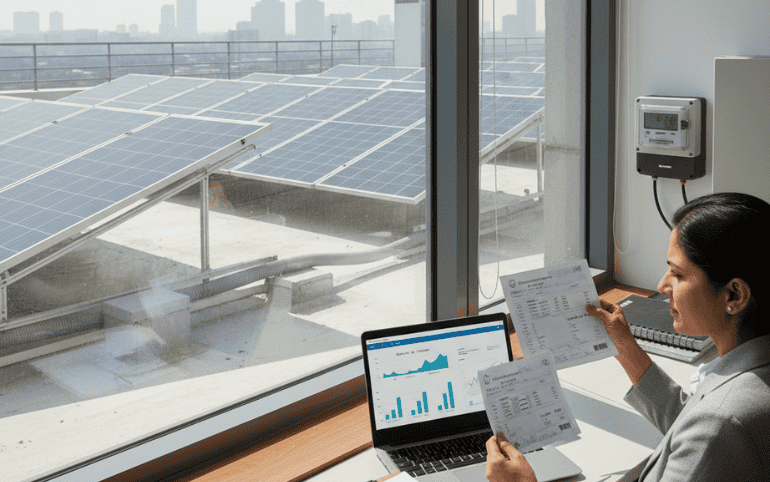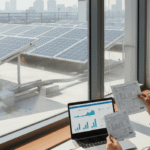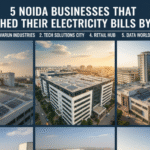In 2025, businesses in the Delhi NCR region (Noida, Greater Noida, Ghaziabad) are facing steadily rising electricity costs. For office spaces and commercial buildings that operate long hours with air conditioning, lighting, and IT loads, the monthly power bill can eat into profits.
The good news? Adopting solar energy can help offices reduce electricity bills by up to 60%, while gaining long-term energy independence and tax benefits. Let’s explore how offices in NCR can achieve this transformation step by step.
Why Solar Power Is a Game Changer for NCR Offices
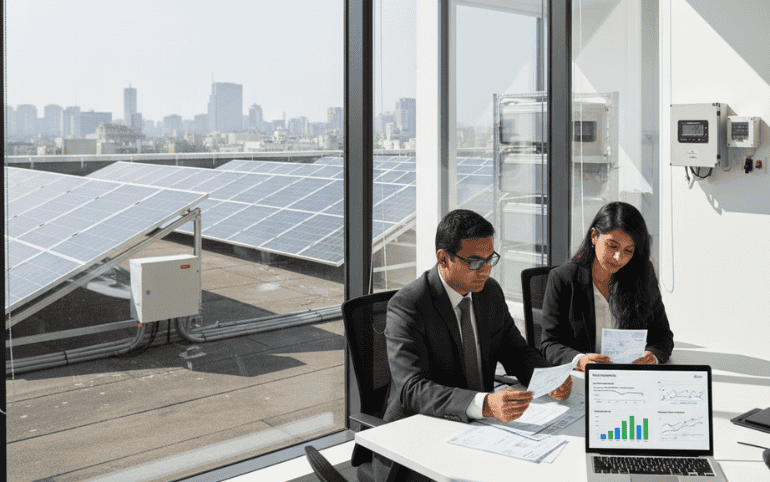
Solar energy allows offices to generate their own clean power, drastically cutting dependency on grid electricity. With state and central government subsidies, offices can now recover their investment in as little as 4–5 years, after which most of the power generated is virtually free.
Additionally, NCR receives over 300 sunny days annually, making it one of India’s most solar-efficient regions.
Step-by-Step Savings Plan for Offices in NCR
1. Evaluate Your Power Consumption and Site Potential

The first step to cutting costs is understanding your energy consumption.
Professional solar EPC providers conduct a site survey to analyze:
- Your monthly power usage (kWh)
- Rooftop area and shadow-free zones
- Load profile and power backup needs
Example: A 25 kW rooftop solar system can offset a significant portion of a medium-sized office’s total energy consumption, helping reduce monthly bills by over 60%.
2. Leverage Government Subsidies in 2025
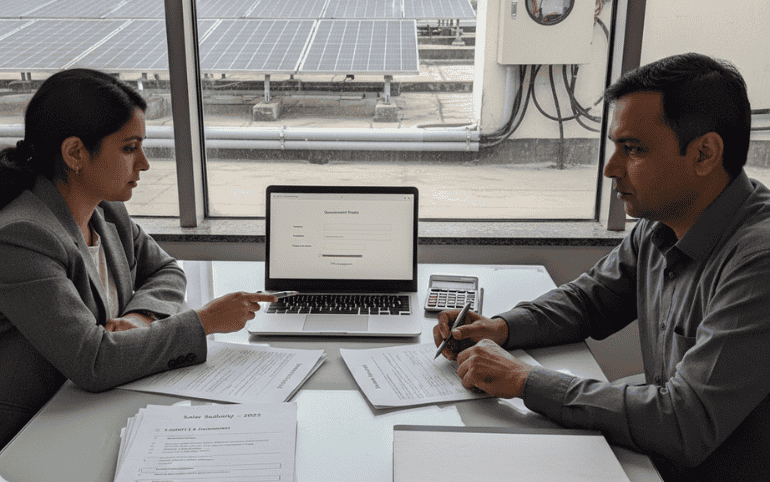
In Uttar Pradesh, commercial users can access up to 15% capital subsidy under the current 2025 policy framework for rooftop solar installations.
Delhi’s solar policy further enhances commercial adoption with robust incentives and simplified approval processes.
Businesses can also combine Central Financial Assistance (CFA) with state-level subsidies to minimize upfront costs.
Result: Lower capital investment and shorter payback period.
3. Use Net Metering for Maximum ROI
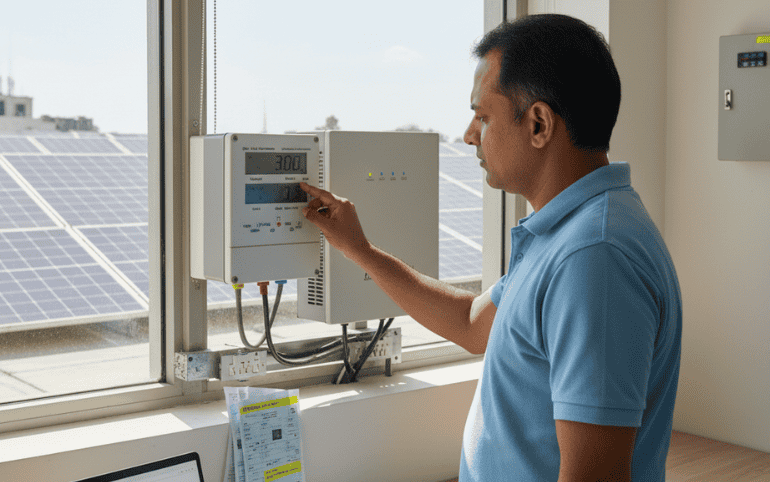
Under net metering, any excess solar energy your office generates is exported back to the grid. In return, you earn energy credits that offset nighttime or high-load electricity use.
This means you pay only for the net energy consumed, significantly reducing your monthly bill.
Example: Offices with net metering systems typically achieve an ROI of 18–25% annually.
4. Claim Tax Benefits and Accelerated Depreciation

Commercial solar systems are eligible for:
- Accelerated depreciation benefits (up to 40%)
- GST input credit
- Reduced effective cost of ownership
These financial incentives help push the Internal Rate of Return (IRR) beyond 20%, making solar a highly attractive investment for office owners.
5. Ensure Regular Maintenance and Smart Monitoring
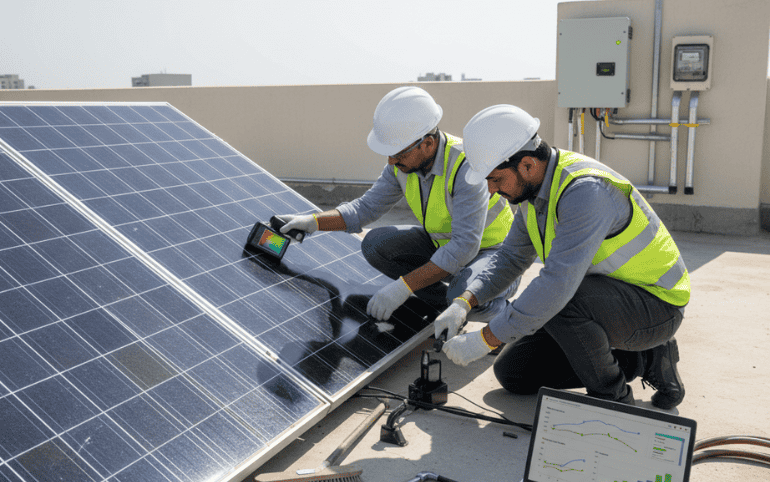
Modern rooftop solar systems come with IoT-based monitoring solutions, allowing real-time tracking of generation and performance.
Professional Operation & Maintenance (O&M) services ensure:
- Maximum uptime
- Early detection of panel issues
- Continued high efficiency
This helps maintain consistent savings for 20+ years—the average lifespan of quality solar panels.
Example: Savings Breakdown for a Typical Office
| System Size | Monthly Bill (Pre-Solar) | % Offset by Solar | Projected Bill (Post-Solar) | Typical Payback (Years) |
| 25 kW | ₹60,000 | 60% | ₹24,000 | 4–5 years |
Actual savings vary depending on rooftop size, sunlight exposure, and subsidy usage, but most NCR offices see consistent reductions within the first year of installation.
Key Takeaways for NCR Businesses
- Offices in Noida, Greater Noida, and Ghaziabad can achieve up to 60% electricity bill savings by switching to rooftop solar.
- Combining subsidies, net metering, and tax benefits creates a strong financial case for adoption.
- The payback period for commercial solar installations is typically 4–5 years.
- After the payback period, your office enjoys free power for the next 15–20 years.
FAQs
Q1. How much space does my office need for solar installation?
A 25 kW system typically requires around 2,500 sq. ft. of shadow-free rooftop space.
Q2. Are subsidies still available for commercial solar in 2025?
Yes, both UPNEDA (Uttar Pradesh) and Delhi Solar Policy provide financial assistance for commercial and industrial users.
Q3. What’s the lifespan of a rooftop solar system?
High-quality panels last 20–25 years with minimal maintenance.
Q4. Can I install solar if my office is rented?
Yes, with OPEX or RESCO models, your landlord or a third party can own the system, while you pay only for the energy used.
Q5. How can SIA Engineering help?
At SIA Engineering, we provide end-to-end solar EPC services — from site assessment to installation, subsidy assistance, and long-term maintenance — ensuring maximum savings and hassle-free operations.
Conclusion
With solar adoption rapidly growing across NCR, offices that invest in rooftop solar power in 2025 can expect to cut energy costs by up to 60%, protect against future tariff hikes, and reduce carbon emissions.
Whether you’re in Noida, Greater Noida, or Ghaziabad, SIA Engineering can help you design a custom solar solution that fits your energy needs, budget, and sustainability goals.
Start saving today — partner with SIA Engineering for a smarter, cleaner, and more cost-efficient future.



